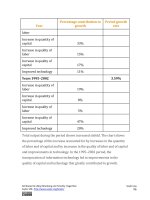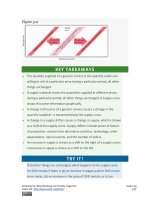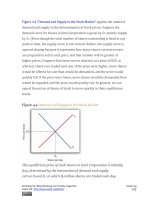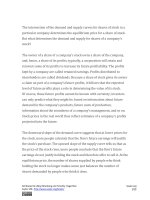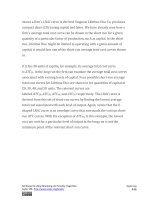Authors libby rittenberg 445
Bạn đang xem bản rút gọn của tài liệu. Xem và tải ngay bản đầy đủ của tài liệu tại đây (493.31 KB, 1 trang )
The maquiladoras have been a boon to workers in Mexico, who enjoy a
higher demand for their services and receive higher wages as a result. The
system also benefits the U.S. firms that participate and U.S. consumers who
obtain less expensive goods than they would otherwise. It works because
different factor prices imply different mixes of labor and capital.
Companies are able to carry out the capital-intensive side of the
production process in the United States and the labor-intensive side in
Mexico. [1]
Costs in the Long Run
As in the short run, costs in the long run depend on the firm’s level of
output, the costs of factors, and the quantities of factors needed for each
level of output. The chief difference between long- and short-run costs is
there are no fixed factors in the long run. There are thus no fixed costs. All
costs are variable, so we do not distinguish between total variable cost and
total cost in the long run: total cost is total variable cost.
The long-run average cost shows the firm’s lowest cost per unit at each
level of output, assuming that all factors of production are variable.
The LRAC curve assumes that the firm has chosen the optimal factor mix,
as described in the previous section, for producing any level of output. The
costs it shows are therefore the lowest costs possible for each level of
output. It is important to note, however, that this does not mean that the
minimum points of each short-run ATC curves lie on the LRAC curve. This
critical point is explained in the next paragraph and expanded upon even
further in the next section.
Attributed to Libby Rittenberg and Timothy Tregarthen
Saylor URL: />
Saylor.org
445
